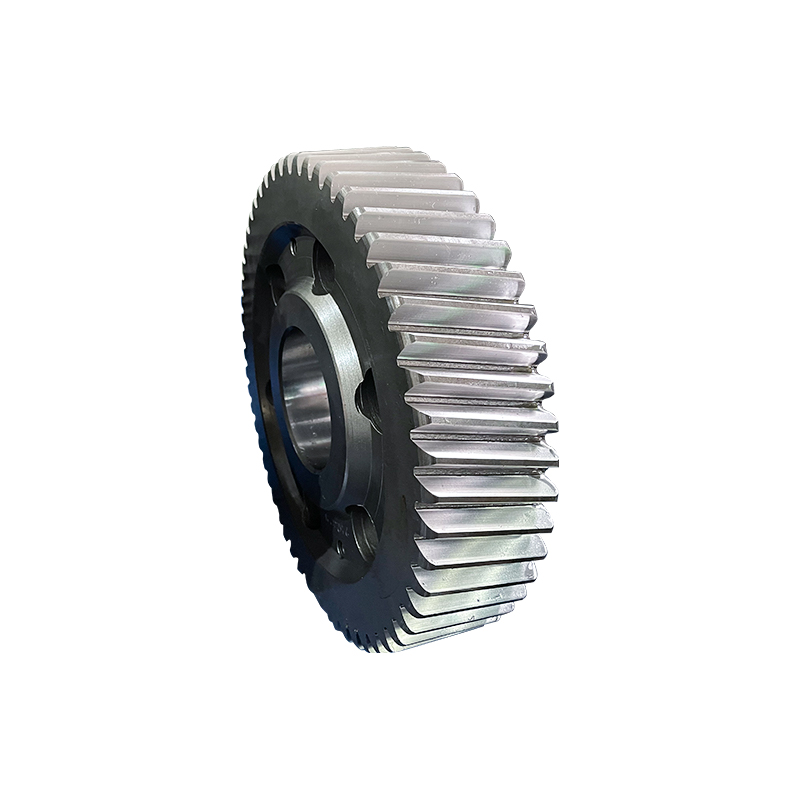Definition and Basic Structure
A helical gear is a type of cylindrical gear with helicoid teeth cut at an angle to the axis of rotation. This angle is called the helix angle. Unlike spur gears whose teeth are parallel to the axis, the helical arrangement of teeth gives helical gears unique characteristics.
The basic components of helical gears include the pitch diameter, which is the diameter of the circle at which the pitch is measured; the circular pitch, the distance between corresponding points on adjacent teeth along the pitch circle; and the circular thickness, the arc length between the two sides of a gear tooth at the pitch circle.
Types of Helical Gears
Single Helical Gear: Used to transfer power between parallel shafts. When two single helical gears mesh, they must have the same helix angle but opposite hand directions. The inclination of the teeth allows for gradual meshing, enabling the gear to carry more load, but also generates axial force.
Double Helical Gear: Also known as herringbone gear, it has the appearance of two helical gears installed back - to - back. The axial load generated by helical gears can be offset by this design, allowing for a larger helix angle to be used without the need for thrust bearings.
Crossed Helical Gear: Composed of a pair of helical gears with the same hand, used for non - parallel and non - intersecting shaft power transmission. However, due to limited tooth contact, its load - carrying capacity is low and not suitable for high - power transmission.
Helical Rack & Pinion: A helical rack is a linear gear that meshes with a helical gear. It can convert the rotary motion of the helical gear into linear motion.
Working Principle
The teeth of helical gears engage gradually from one end, and multiple teeth are in contact during the meshing process, sharing the load. This results in smooth and quiet operation compared to spur gears. The gear ratio, which is determined by the number of teeth on each gear, defines the relationship between the rotational speeds and torques of the input and output shafts. However, the inclined teeth also introduce sliding contact, generating axial forces and heat, which need to be considered and managed properly.
Advantages
Smooth and Quiet Operation: The gradual engagement of teeth reduces vibration and noise, making them suitable for applications where noise reduction is crucial, such as in automotive transmissions.
High Load - Bearing Capacity: Multiple teeth meshing simultaneously allow helical gears to carry heavier loads than spur gears, enhancing the durability and reliability of the transmission system.
Compact Design: They can achieve a high gear ratio in a relatively small space, contributing to the compactness of the overall mechanical system.

Disadvantages
Axial Thrust: The helical angle causes axial thrust, which requires the use of thrust bearings to support the rotation and resist these forces, increasing the complexity and cost of the bearing system.
Complex Manufacturing: The manufacturing process of helical gears is more complex than that of spur gears due to the need to cut the teeth at a specific angle, which may increase production costs and time.
Applications
Automotive Industry: Widely used in transmissions to provide smooth gear shifting and quiet operation, improving the driving experience.
Industrial Machinery: Such as in gearboxes of mechanical, fabrication, and construction machinery, where high - speed and high - torque power transmission is required.
Aerospace Industry: Employed in various aircraft mechanical systems due to their high - efficiency power transmission and compact design.
Selection Considerations
When selecting helical gears, factors such as the number of teeth, pitch diameter, outer diameter, center distance, helix angle, and pressure angle need to be considered. The material of the gear should also be chosen according to the application requirements, considering factors such as load, speed, and working environment. Common materials include steel, brass, bronze, and plastic.
We have a strong R&D team, and we can develop and produce products according to the drawings or...
We have two of our own casting foundries and one CNC machining factory. So we can offer the best price...
We have our own testing lab and the advanced and complete inspection equipment, which can...